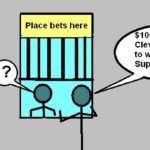Leland Teschler, Executive Editor
Teschler on Topic
[email protected]
ON Twitter, @DW-LeeTeschler
Most engineers who have cable are probably familiar with the original Mythbusters show which ran for 14 seasons on the Discovery Channel. It made celebrities out of the cohosts, Jamie Hyneman and Adan Savage, who used elements of the scientific method to test the validity of rumors, myths, movie scenes, and urban legends.
Hyneman and Savage may have been, for a time, the most well-known techies in America. They drew crowds when they made public appearances, and they were known as big promoters of STEM (science, technology, engineering, and math) education. The irony, though, is that neither Hyneman nor Savage has a STEM background. Hyneman has a bachelor’s degree in Russian linguistics (though he also received an honorary engineering Ph.D. from Villanova). Savage doesn’t mention any university degree in his past, though he, too, has an honorary Ph.D.
However, the Mythbusters duo have a solid background in the arts. Savage has been a graphic designer, carpenter, and model maker. Hyneman has been  an animatronics technician and runs a company that specializes in creating special theatrical effects.
an animatronics technician and runs a company that specializes in creating special theatrical effects.
You’d have to say that their arts background and lack of STEM credentials didn’t seem to prevent either of these two from doing some pretty interesting and well-thought-out engineering work. And that conclusion would fit with a recent study coming out of the National Academy of Sciences. The Academy says employers, even the high-tech kind, put critical thinking, communication, and teamwork on a par with technical skills. And those soft skills are more likely to come from an educational process that integrates STEMM (the extra M stands for medical) work with humanities, arts, crafts, and design (HACD) practices.
It turns out there is a lot of evidence that adding HACD topics can improve performance in STEMM. Robert Root-Bernstein, a MacArthur Fellow at the Mich. State University Physiology Dept., reports that individuals who practice the arts are more likely to file patents than those who are less artistically inclined. Similarly, he’s also found that STEMM workers who pursue wood and metalworking, painting, and music composition are more likely to file patents and start companies than those who don’t.
Root-Bernstein says STEMM practitioners often link HACD with STEMM practices via mental tools for thinking that include observing, imaging, abstracting, pattern recognition, pattern forming, dimensional thinking, analogizing, empathizing, modeling, playing, and transforming between various ways of thinking. For example, drawing develops observational and visual thinking skills that facilitate STEMM learning. Musical teaching improves visual and aural observational skills among STEMM students. And having to come up with a scientific game or model develops transformational and synthetic thinking skills more fully than does just playing one.
Some colleges are already trying to integrate HACD ideas into STEMM classes. The NAS report cites a class at the Olin College of Engineering in materials science that incorporated elements of history. In fact, it was co-taught by engineering and history faculty. Students in the course were more motivated and engaged than those in ordinary mat sci classes. Additionally, students claimed they used critical thinking skills in their work more frequently than those in the ordinary course.
The NAS report says courses like Olin’s history/mat sci effort help teach complementary principles and ideas in a way that helps prepare students for real-world problems that span disciplinary boundaries.
But I think the report writers may have missed the most important reason for mixing in arts and humanities classes with the standard STEMM fare: The combination just makes potentially dry STEMM training a heck of a lot more fun and easier to tolerate.
You may also like:
Filed Under: Commentaries • insights • Technical thinking







